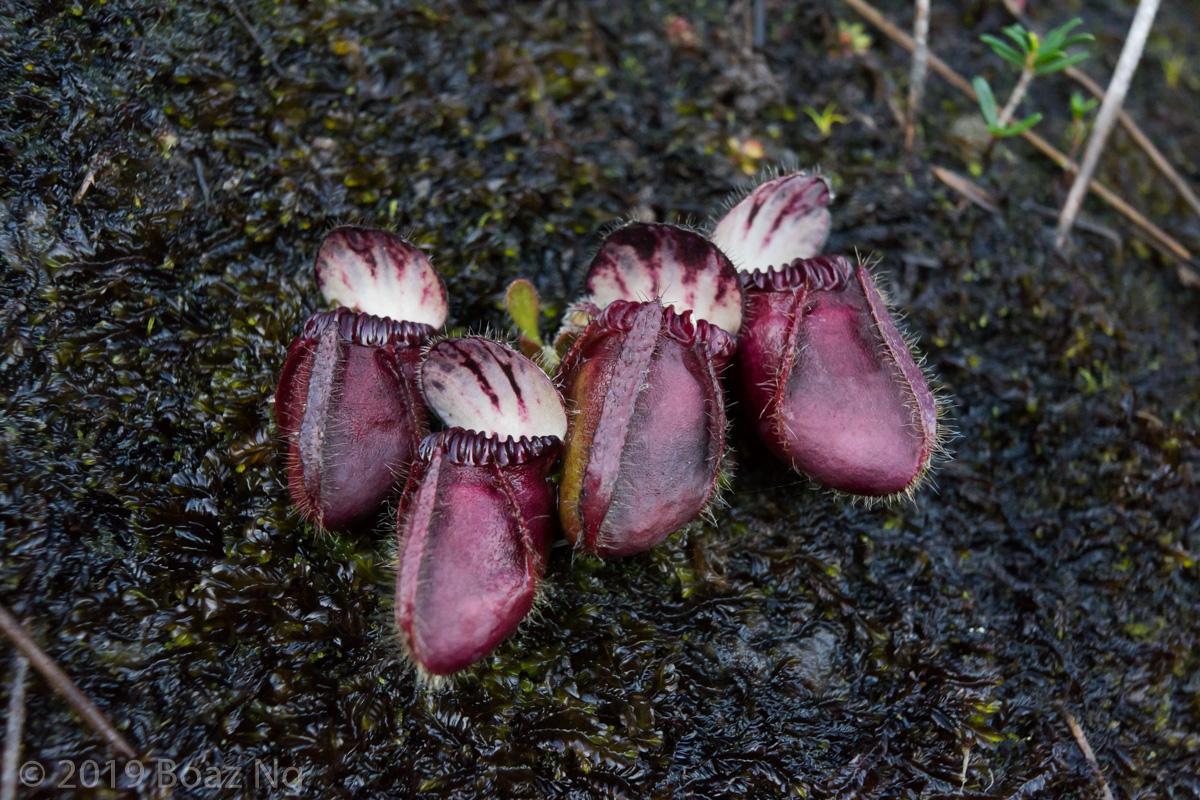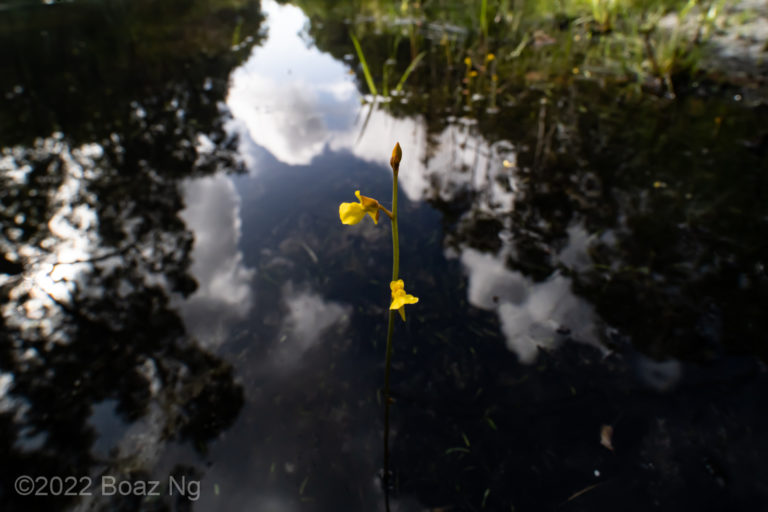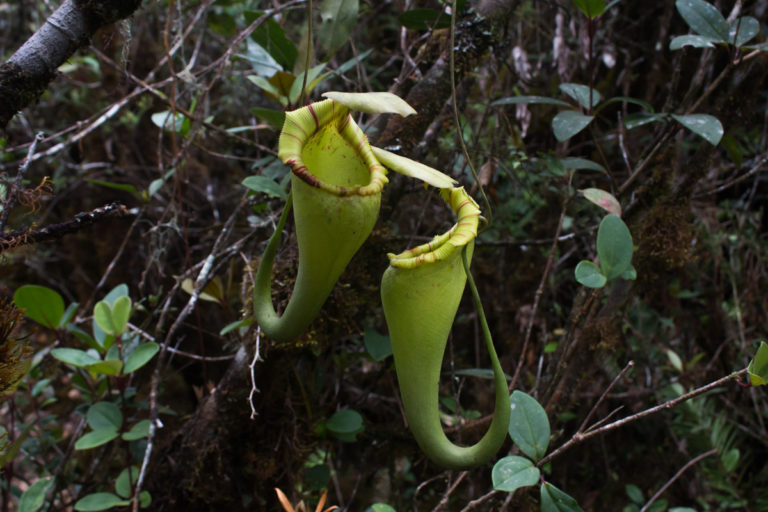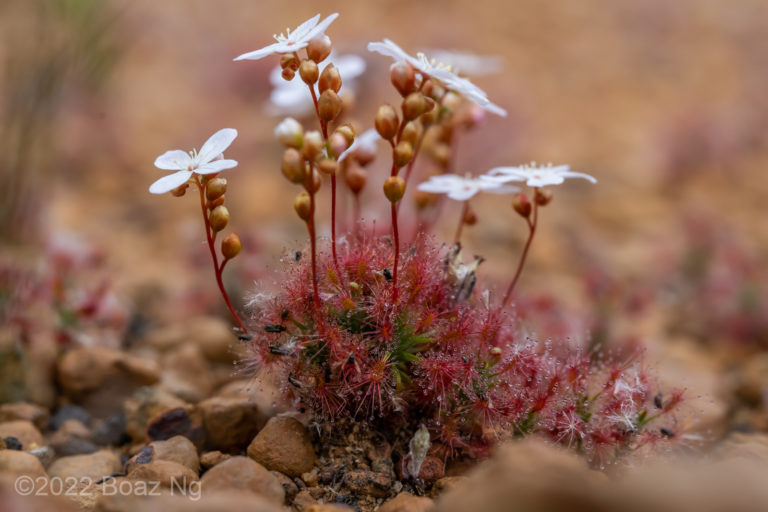At the end of winter in 2019 I embarked on an expedition to document the carnivorous plants of Western Australia. Over 17 days, I drove almost 3,500 km and photographed over 50 species in their habitat.
Previous: Part 2. South West Forests
I woke up in Walpole with intense excitement. The coastal Great Southern region is known for its extensive swamps, which form where water pools in low-lying regions within the undulating topography. The main goal for today was to find the iconic Cephalotus follicularis – the Albany Pitcher Plant, a species which is endemic to the south coast of the state. I located a dirt road that ran straight through a few of the swamps and as the sun rose, we drove off to see what we could find.
Peter and I took turns between driving and keeping an eye out for interesting places to stop at. We firstly passed through a heathy area where we sighted D. microphylla in the sandy laterite. This erect species, as its name suggests, has small foliage but its metallic flowers are amongst the most vivid in the genus. The local form had golden sepals that enclosed tangerine coloured petals and crimson styles. The road eventually bisected swampland, which was so densely grown with sedge and bush that it was practically impenetrable. However, there were drainage channels dug on the side of the road and it was in these exposed habitats that carnivorous plants grew.
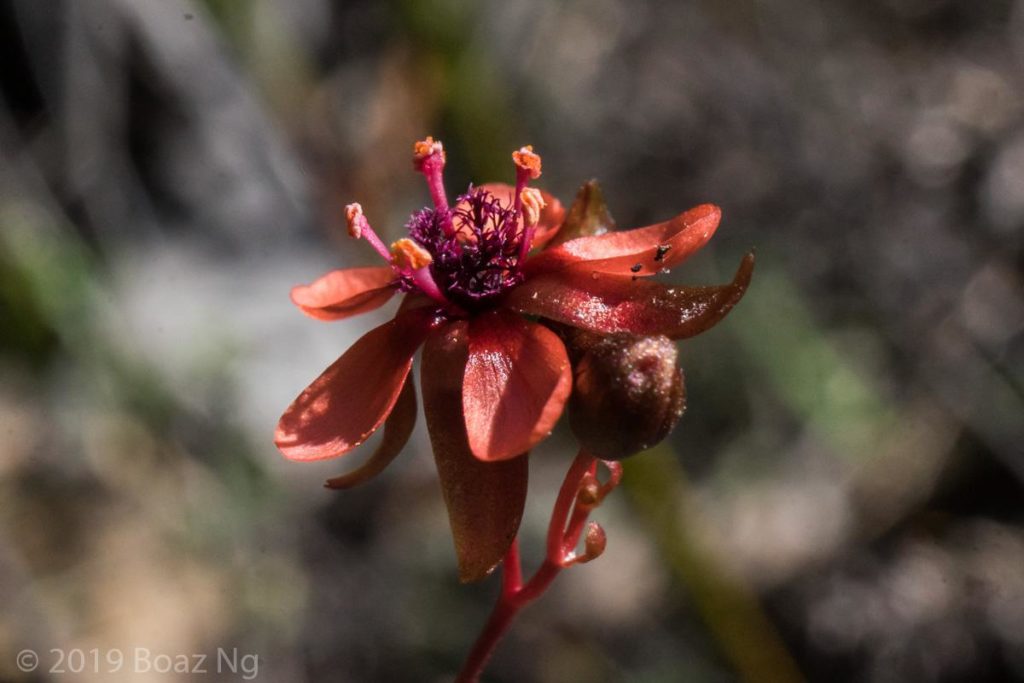
Drosera microphylla 
Drosera pulchella 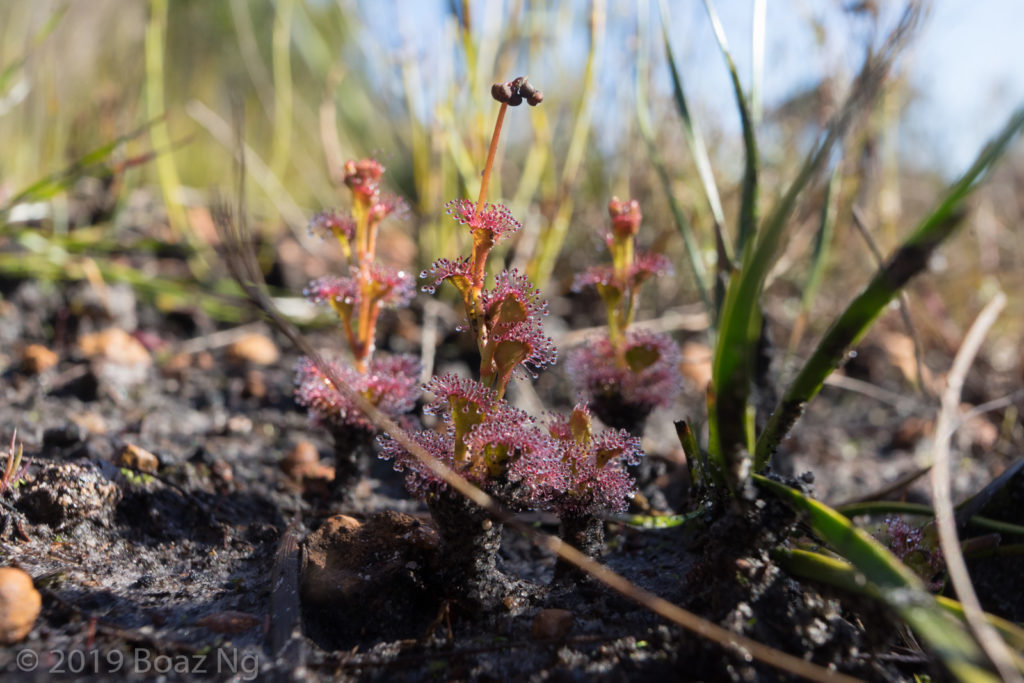
Drosera platypoda 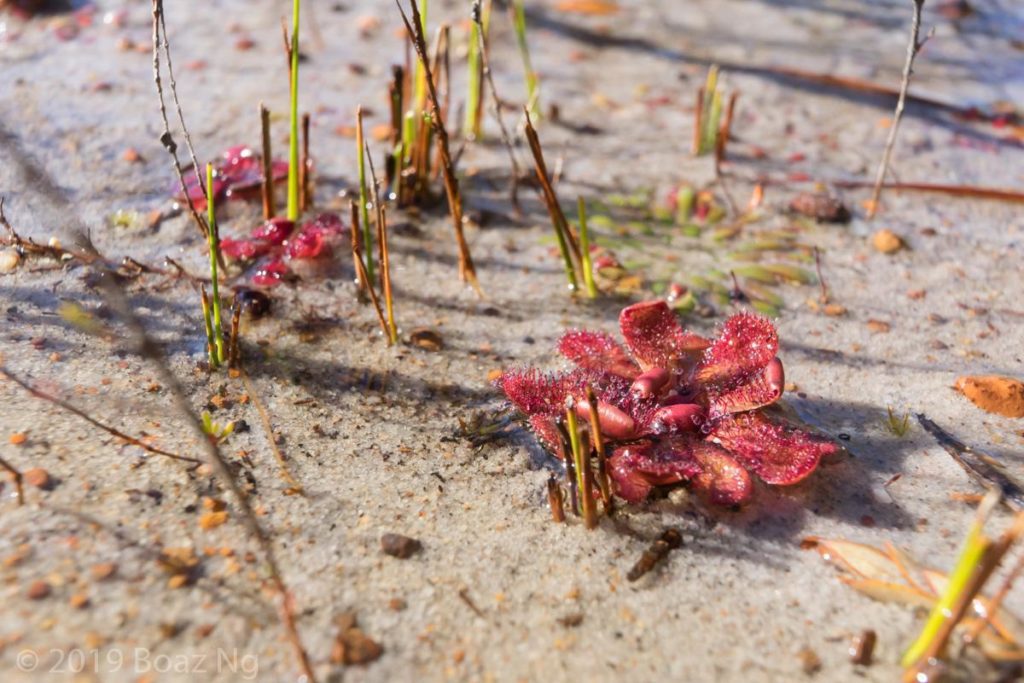
Drosera hamiltonii
Everywhere we found D. pulchella, a pygmy species with a broad petiole and grows in waterlogged soils – in some places I even saw it thriving under water! There were also plenty of D. platypoda, another member of the fan-leaved stolonifera complex. This plant is particularly attractive with its alternating leaf arrangement on a single vertical stem, which gives it a spiralling profile. In the sandy soils next to the swamps, we found D. sulphurea, an erect species with yellow flowers. During one of my turns driving, Peter noticed some red patches on the road cut and upon investigation I was surprised to see that it was D. hamiltonii. This rosetted sundew is one of the few in the region that is not tuberous and is an outlier in the genus in that it produces a fused style structure.
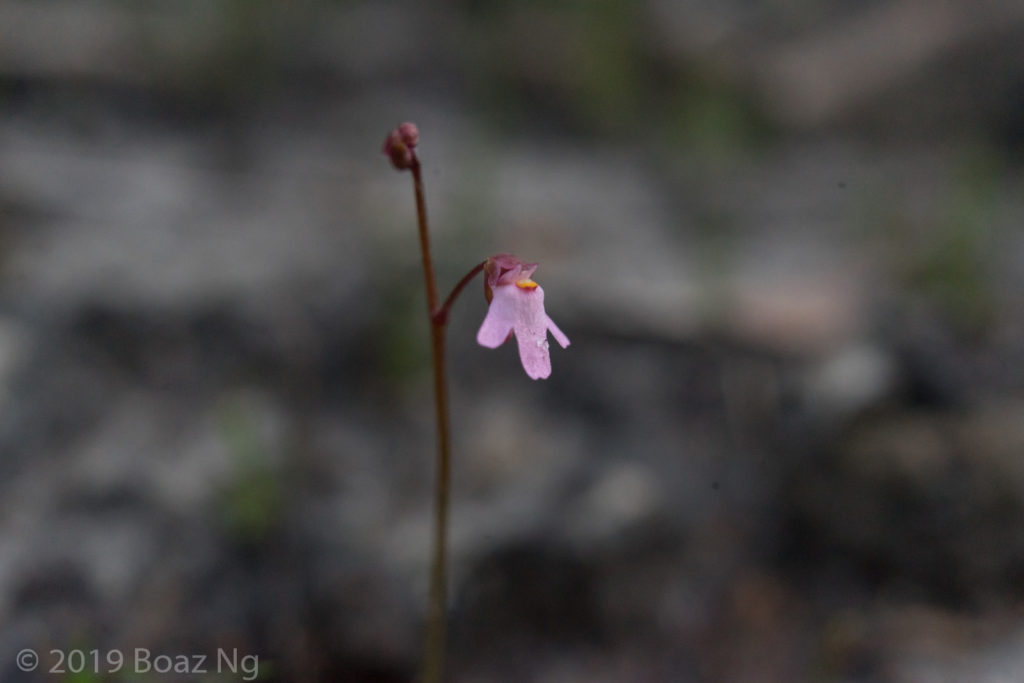
Utricularia tenella 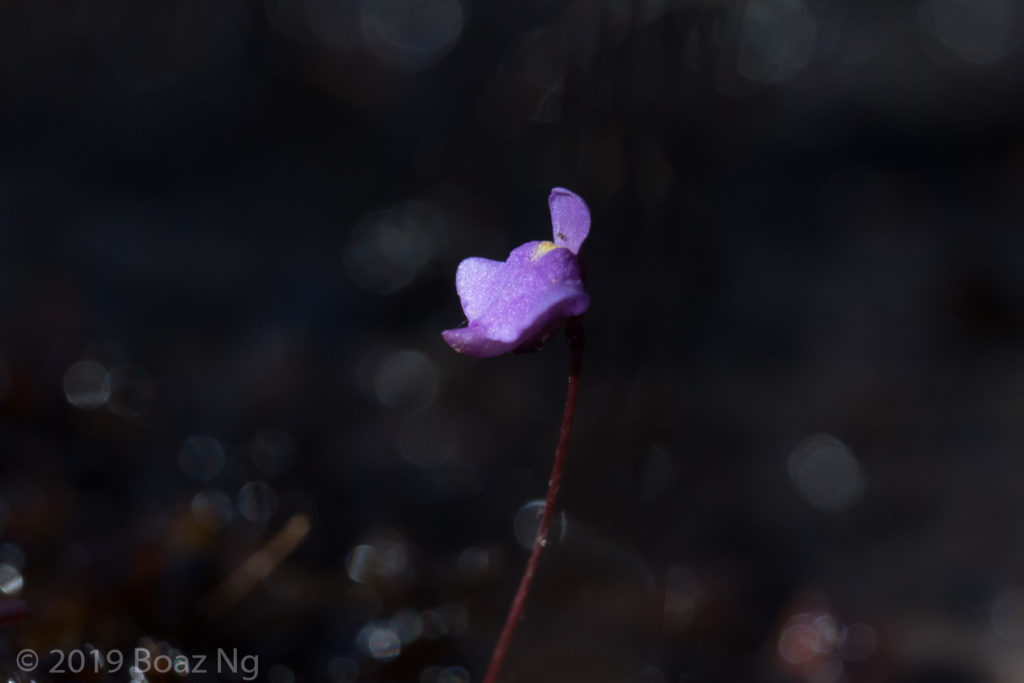
Utricularia simplex
Peter’s attention to detail proved productive as he also found two tiny species of Utricularia in a ditch nearby. The first was U. tenella, which grows pink flowers in the shape of a trident. The other was U. simplex, a diminutive species that has purple petals with a cute yellow dot. As exciting as these discoveries were, we failed to locate Cephalotus hidden within the dense vegetation of the swamp.
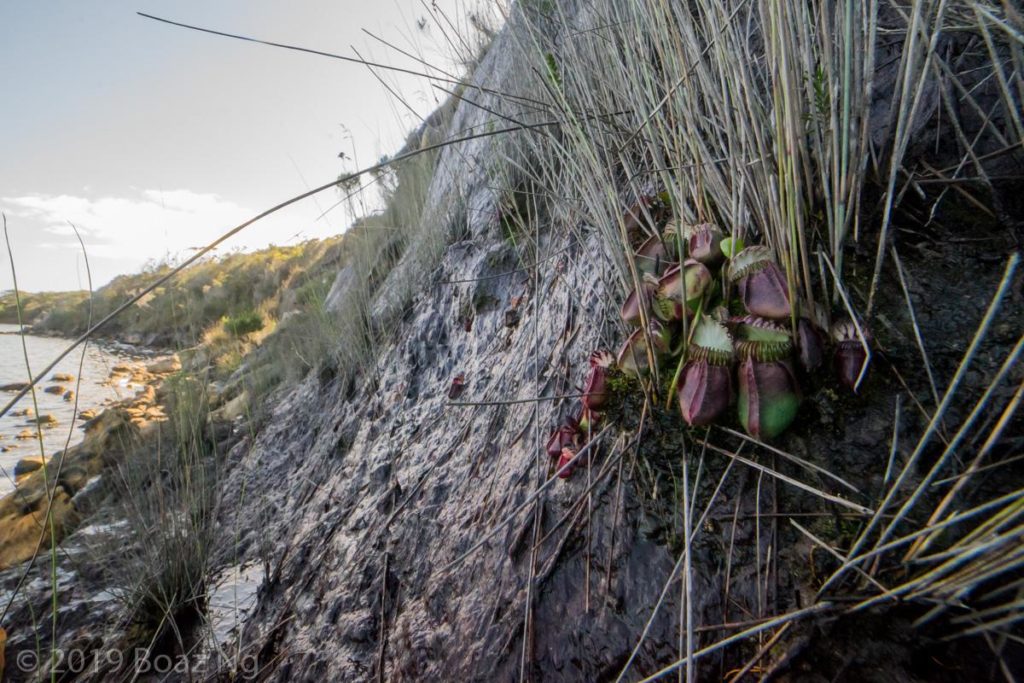
As the afternoon encroached, we made our way to an iconic coastal site well known for its amazing displays of Cephalotus. At this location, a swamp drains over a sea cliff into an estuary, creating a giant peat seepage. We had timed our visit to coincide with low tide and cautiously waded along the coastline to the site. Imagine my excitement when I spotted my first Ceph! The leaves of this extraordinary plant form a cup of digestive fluid to drown and digest their prey, alike the unrelated Sarraceniaceae family in the Americas and Nepenthes of tropical Asia. Once the insect falls in the pitcher, a dramatic peristome of inwards pointing spines negates any attempt to escape. An attractive striped lid overhangs the opening, keeping out excess rainwater. Plants at this site attained a beautiful dark purple, especially when they were exposed to the full sun. It simply amazes me how a leaf could evolve such a complex and functional morphology.
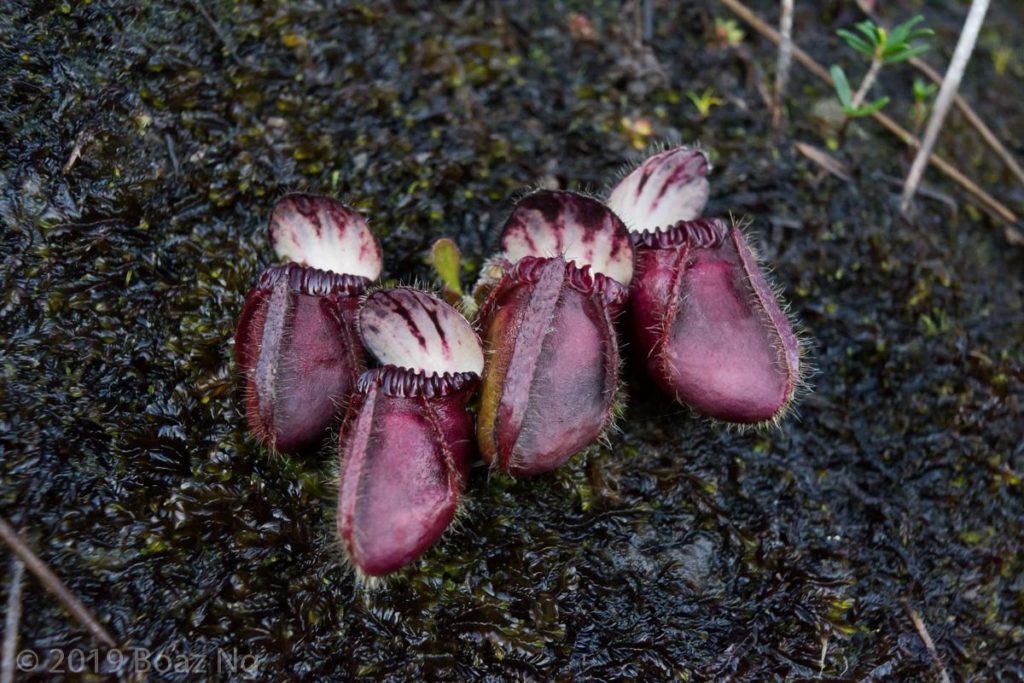
Cephalotus at the coastal site 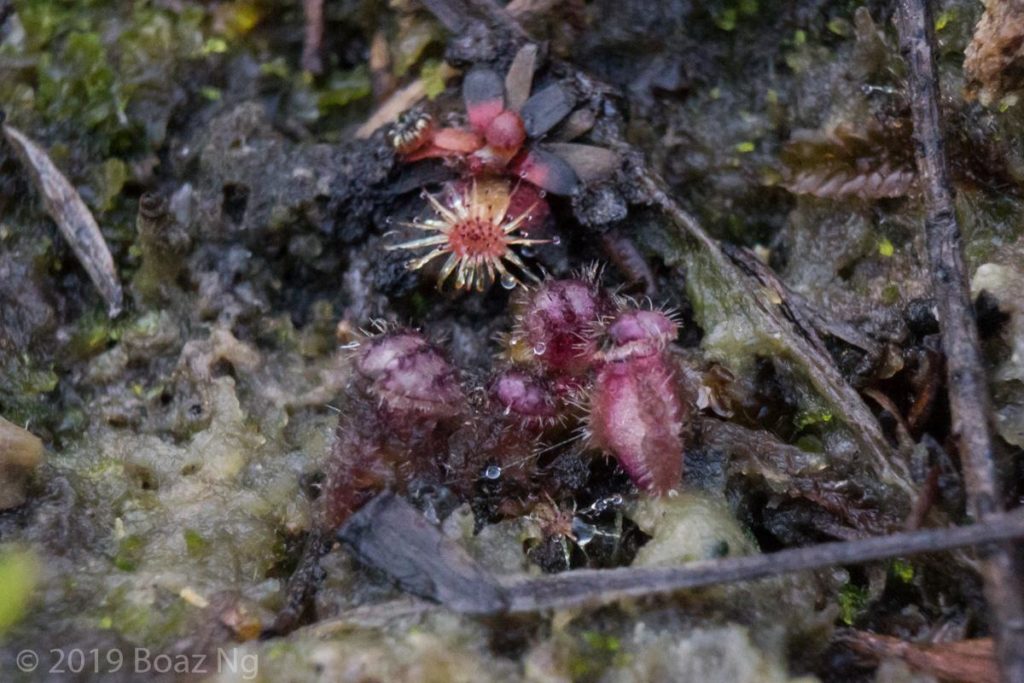
A seedling Cephalotus with Drosera pulchella for size comparison 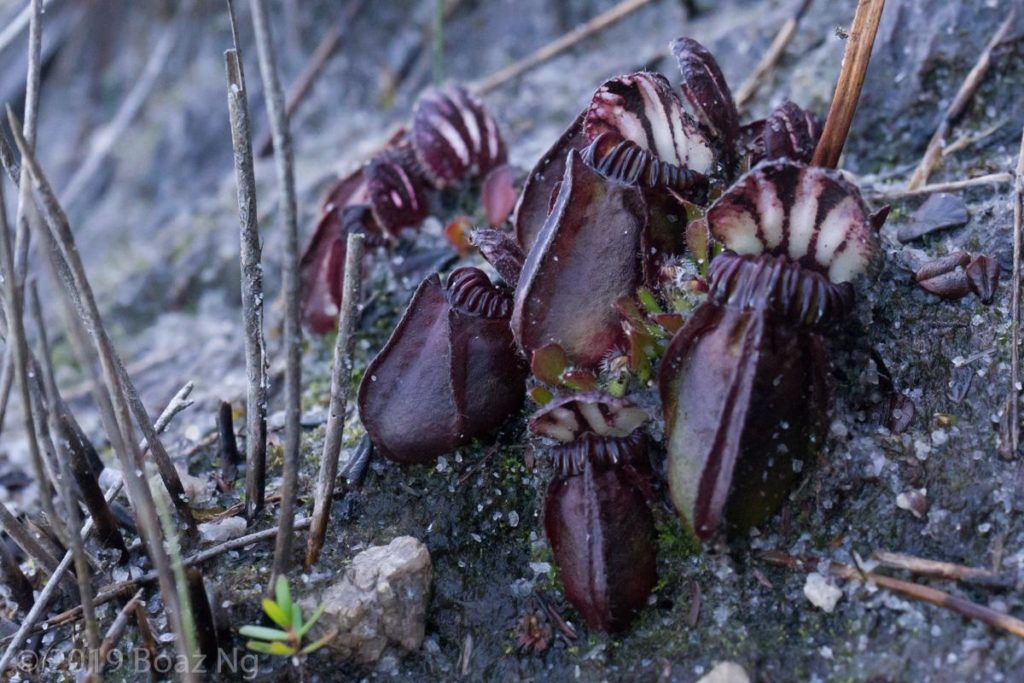
Cephalotus at the coastal site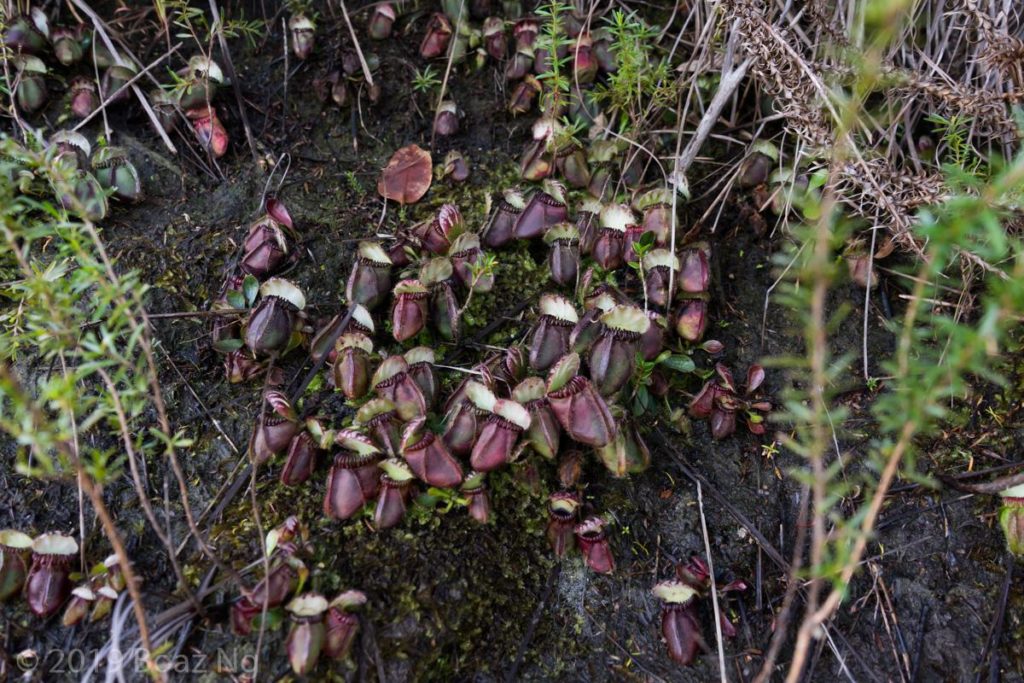
Cephalotus at the coastal site
I spent 2 hours combing the area where I saw plants of varying sizes, from large specimens with pitchers over 5 cm long to tiny seedlings smaller than the D. pulchella growing alongside them. With the sun dipping low, we decided to head back up the cliffs and explore the swamp above. We failed to find any more Cephalotus but saw many rosettes of D. aff. squamosa. The plants at this coastal site only had a slight red border in contrast to the archetypal variety, but the numerous elongated leaves distinguished it from the closely related D. erythrorhiza.
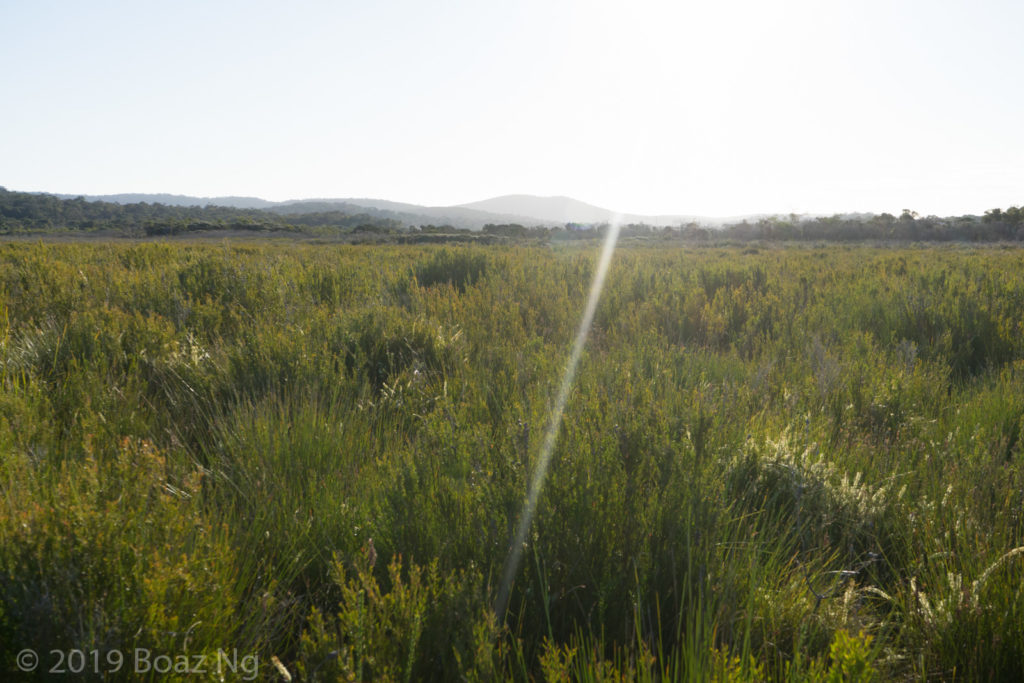
The coastal swamp 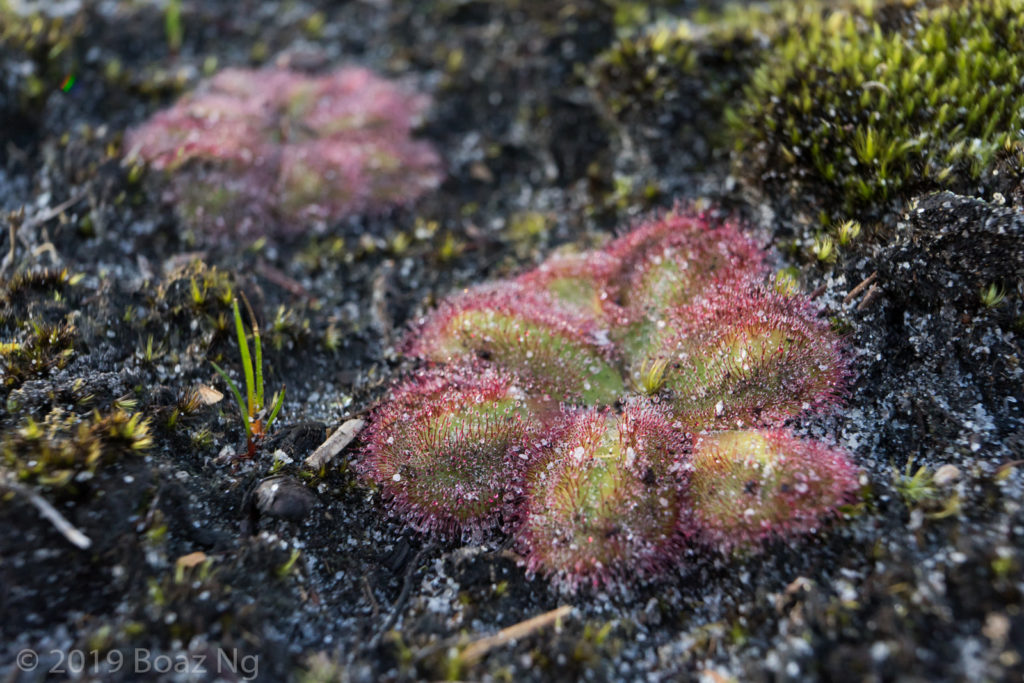
Drosera aff. squamosa
The following morning, we made our way north-east towards the inland mountain ranges north of Albany. Initially tracing the coast, we stopped at a few granite patches where I saw D. purpurascens, another species in the stolonifera complex. This plant exhibits a compact morphology with the fan-shaped laminae borne on long petioles. I found great beauty in their sparkling red leaves, which contrasted deeply with the shadows cast by the morning sun. Amongst the bushes, long stems of D. erythrogyne caught the light dramatically. Perhaps the most interesting find at this site was a granite-growing form of D. microphylla, which inhabited the mossy drainage field of one outcrop. In contrast to the orange heath growing form, this variety had dark red sepals and large pink petals.
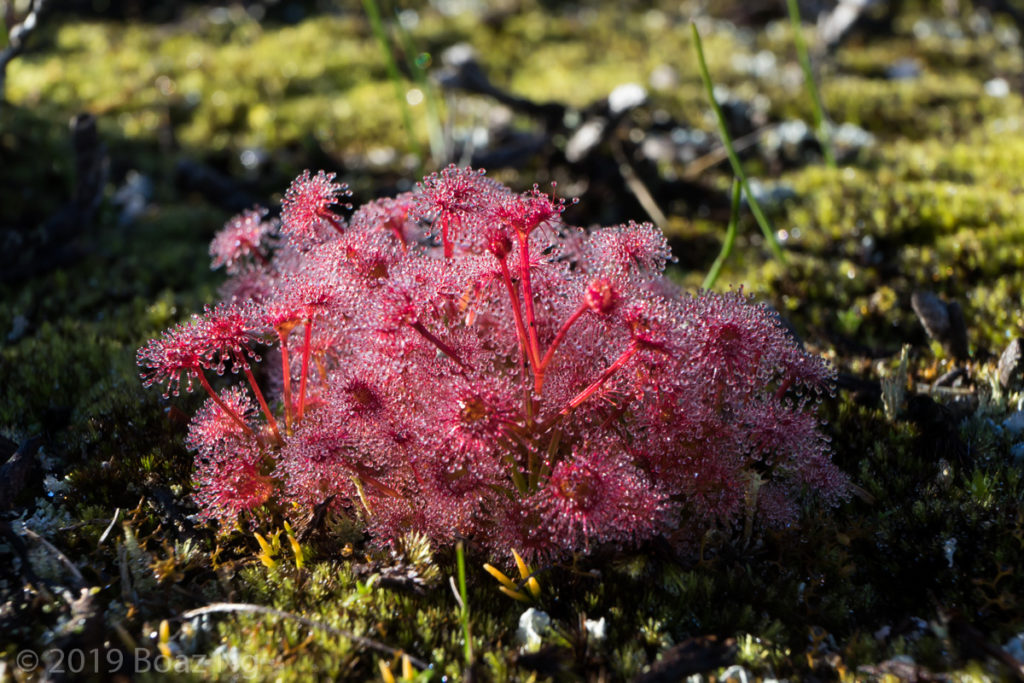
Drosera purpurascens 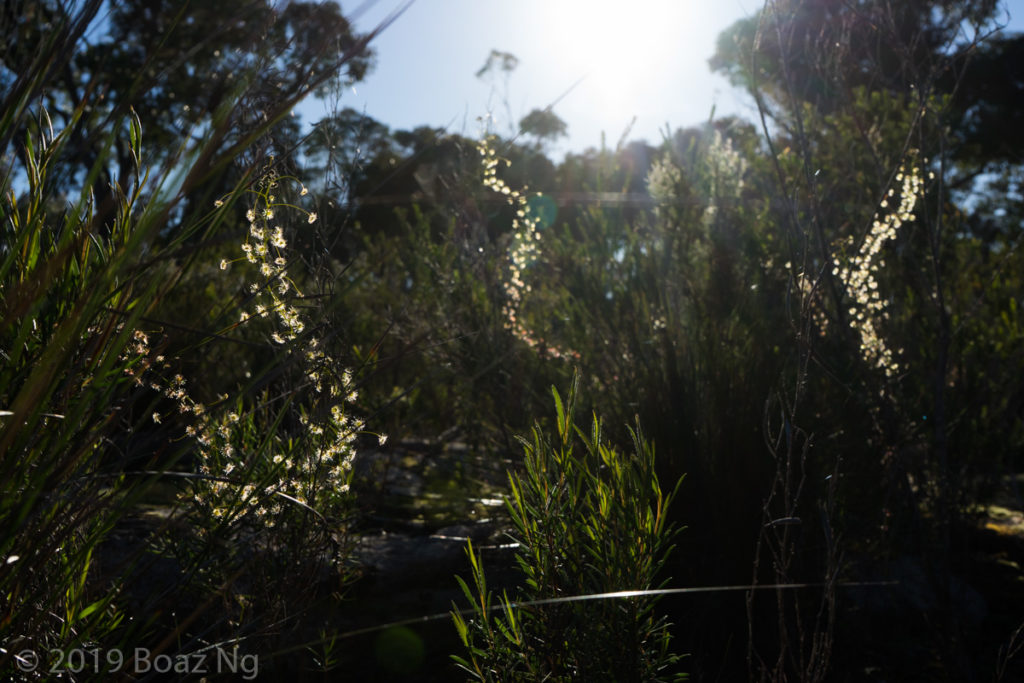
Drosera erythrogyne 
Drosera microphylla pink flowered form 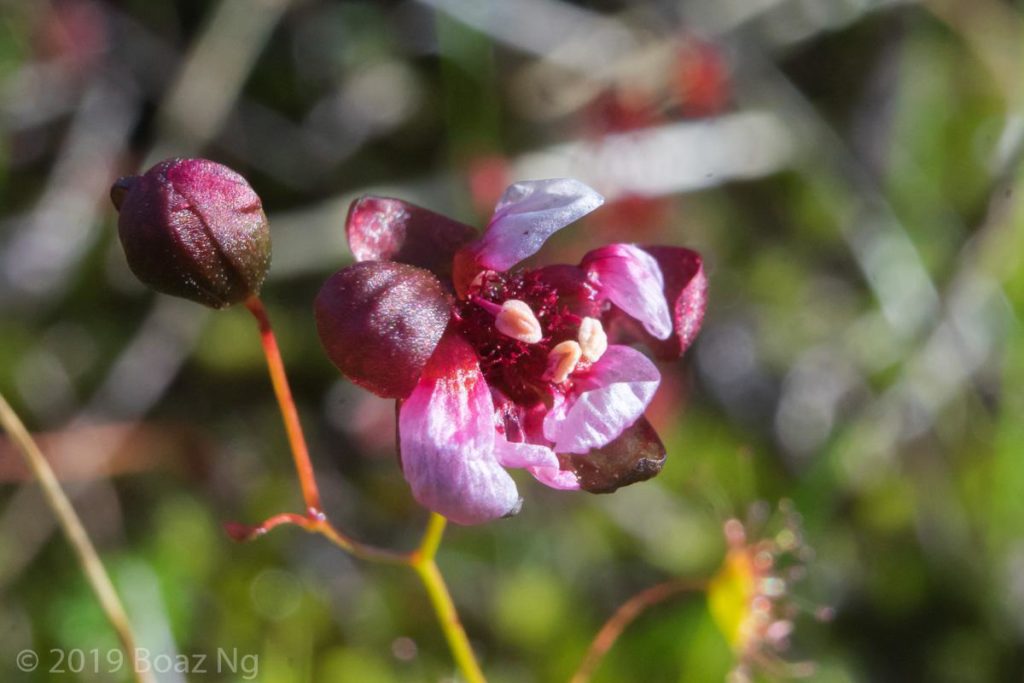
Drosera microphylla pink flowered form
Leaving the coast, we made our way through the Mount Lindesay National Park and stopped at a few locations along the highway. With Peter at the wheel, I kept my eyes on the satellite where I spotted an interesting barren rocky field coming up ahead. There, I found a profusion of pygmy sundews with a raised rosette of leaves and a small stem of old growth. I believe that these were D. verrucata based on morphology and habitat but without flowers, it can be hard to be sure. At the next site, we stopped alongside a sparse patch of eucalypt forest and briefly explored a small trail. Again, we saw the highly variable D. erythrorhiza which had around four almost circular leaves and were much larger than the ones we saw growing on granite. The D. pallida in this area were also the longest we had seen, growing almost three meters in height. It was still before noon, but we had places to be, so with a slight sense of haste we continued our journey to the mountains of the Porongurup Range.
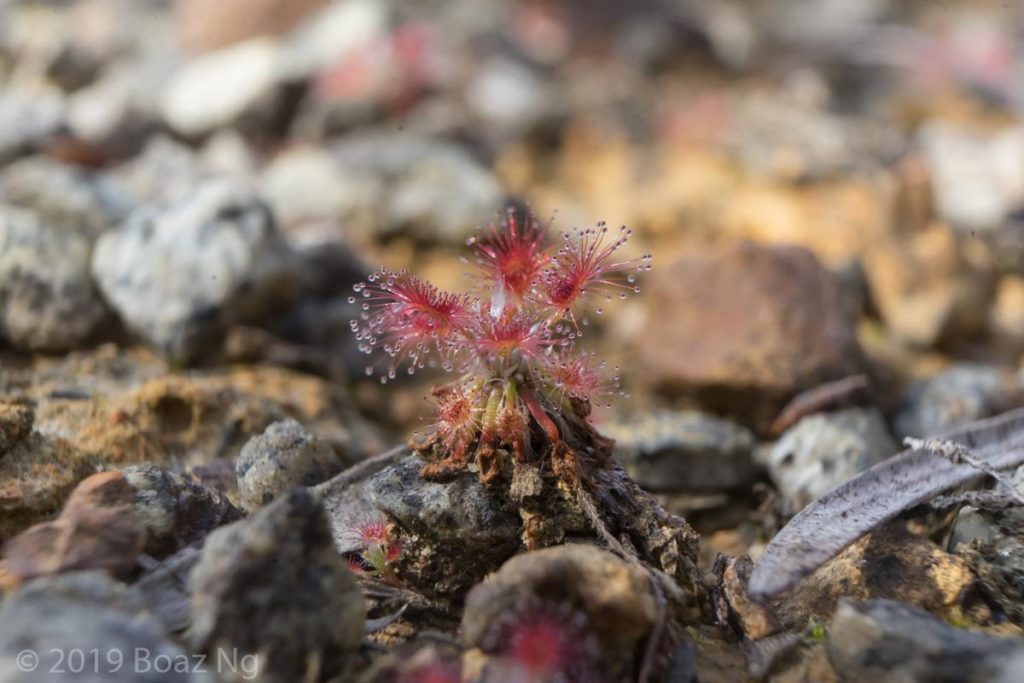
Drosera verrucata 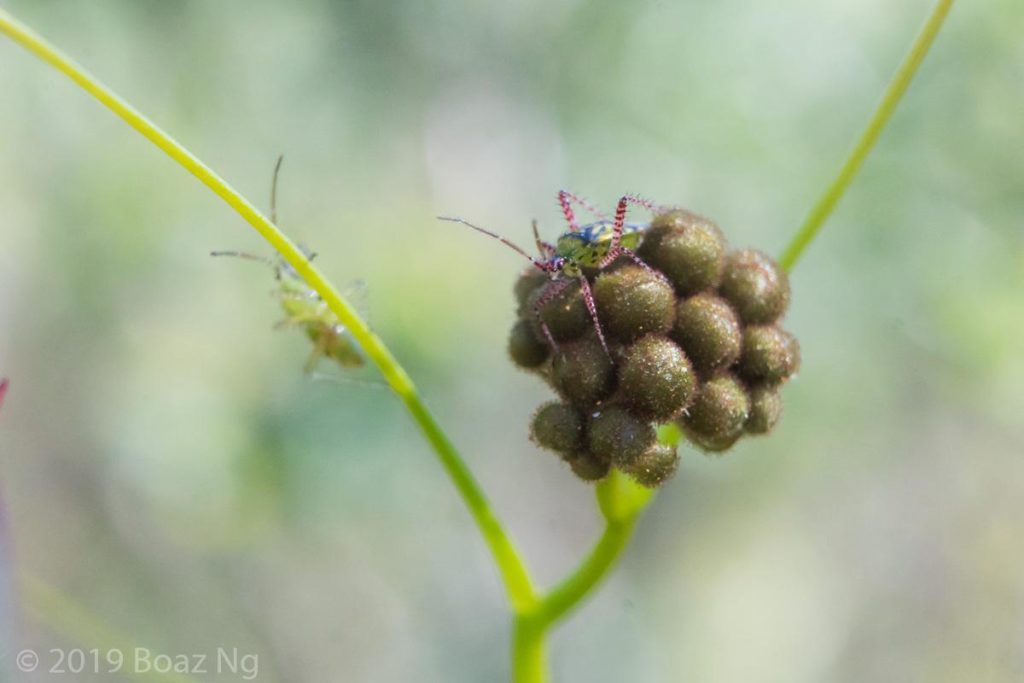
Setocoris on Drosera pallida 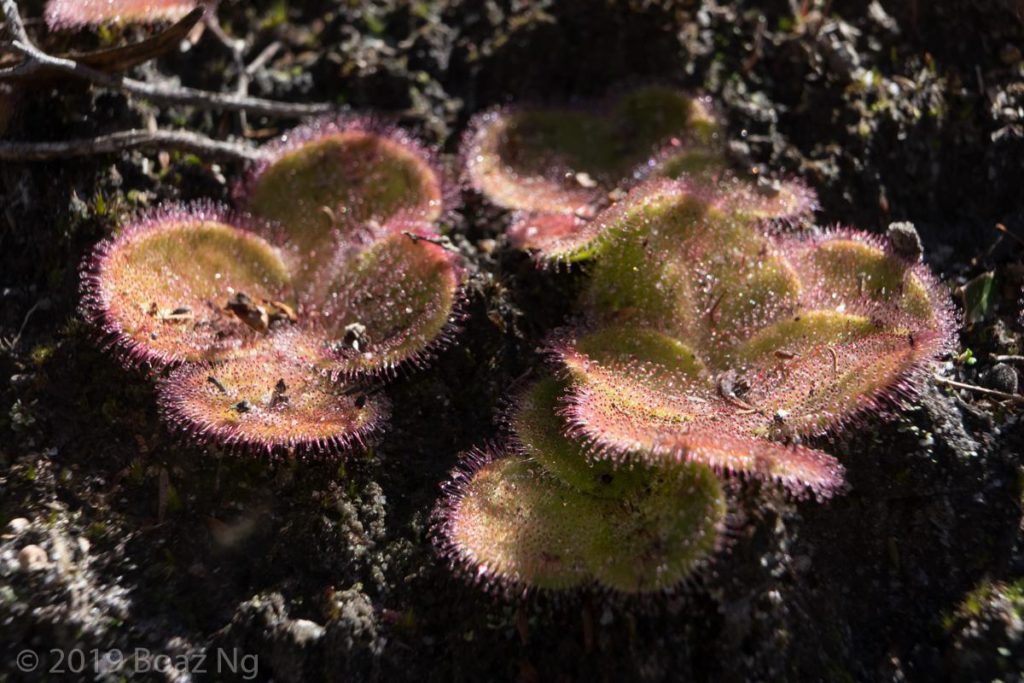
Drosera erythrorhiza 
A very long Drosera pallida
It was still before noon, but we had places to be, so with a slight sense of haste we continued our journey to the mountains of the Porongurup Range.

